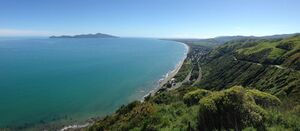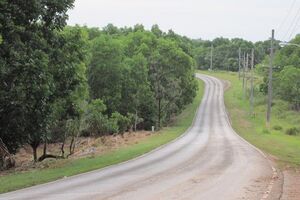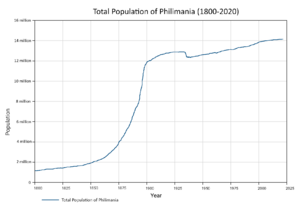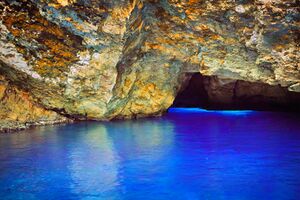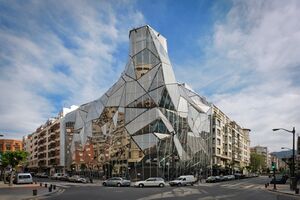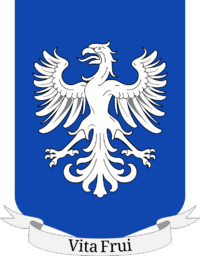Philimania: Difference between revisions
Philimania (talk | contribs) mNo edit summary |
Philimania (talk | contribs) m (→Geography) |
||
| Line 171: | Line 171: | ||
{{Main|Geography of Philimania}} | {{Main|Geography of Philimania}} | ||
[[File:Geography map.png|thumb|Physical map of Philimania]] | <!--[[File:Geography map.png|thumb|Physical map of Philimania]]--> | ||
The land area of Philimania is 228,500 km² (88,200 sq mi) and is bordered by the Nullaric Ocean on all sides. Philimania is 150.3 kilometres (93.4 miles) north of the {{wp|equator}} and comprises of 3 islands, Philimania, [[West Island]], and [[North Island]]. The islands is surrounded by a coral reef, which is exposed at low tide and dotted with pinnacles. The tallest point in Philimania is [[Mount Phanes]] standing at 976 meters in the West of [[North Philimania]]. The most of inland Philimania is covered by the [[Harodan Rainforest]]. [[North Island]] is mostly covered in swamp known as the [[Retop Lagoon]]. There are 4 rivers in Philimania with the longest of which is the [[Brades River]] which runs from [[Mount Naro]] to the west coast of Philimania. | The land area of Philimania is 228,500 km² (88,200 sq mi) and is bordered by the Nullaric Ocean on all sides. Philimania is 150.3 kilometres (93.4 miles) north of the {{wp|equator}} and comprises of 3 islands, Philimania, [[West Island]], and [[North Island]]. The islands is surrounded by a coral reef, which is exposed at low tide and dotted with pinnacles. The tallest point in Philimania is [[Mount Phanes]] standing at 976 meters in the West of [[North Philimania]]. The most of inland Philimania is covered by the [[Harodan Rainforest]]. [[North Island]] is mostly covered in swamp known as the [[Retop Lagoon]]. There are 4 rivers in Philimania with the longest of which is the [[Brades River]] which runs from [[Mount Naro]] to the west coast of Philimania. | ||
Revision as of 19:03, 8 December 2022
This article and its associate pages are undergoing a shift in multiverse, texts in this article may conflict with other pages taking place in the same universe. Please comment on this article's talk page to share your input, comments and questions. |
This article is incomplete because it is pending further input from participants, or it is a work-in-progress by one author. Please comment on this article's talk page to share your input, comments and questions. Note: To contribute to this article, you may need to seek help from the author(s) of this page. |
Republic of Philimania | |
|---|---|
Motto: Vita Frui ("Enjoy Life") | |
| Location of Philimania (dark green) – in South Domica (grey) Location of Philimania (dark green) – in South Domica (grey) | |
| File:TBA | |
| Capital | New Phork City |
| Largest city | New Phork City |
| Official languages | Neragese |
| Recognised regional languages | Paqueon |
| Ethnic groups (1999) | 48% Philimanian 24% Paqueon 22.2% Neragese 4% Other Oranish 1.7% Naphto-Philimanians 0.1% Naphtorans |
| Demonym(s) | Philimanian |
| Government | Constitutional Federal Republic |
| Nel Karlson | |
| Henry Field | |
| Legislature | |
| Legislative Council | |
| House of Representatives | |
| History | |
| Area | |
• Total | 228,500 km2 (88,200 sq mi) |
| Population | |
• 2000 estimate | |
• 2000 census | 14,088,100 |
• Density | 61.6/km2 (159.5/sq mi) |
| GDP (PPP) | 2000 estimate |
• Total | |
• Per capita | |
| GDP (nominal) | 2000 estimate |
• Total | |
• Per capita | |
| Gini | low |
| HDI | very high |
| Currency | Creit (β) (CET) |
| Time zone | X |
| Date format | dd/mm/yyyy (CE) |
| Driving side | left |
| Calling code | X |
| Internet TLD | .ph |
The Republic of Philimania (/fɪlɪ'meɪnɪə/ ( listen)), commonly called Philimania, is a federal republic governed by The Philimanian Legislative Council (TPLC) in Western South America. Philimania covers over 20 thousand square kilometres and has a population of over 5 million. The nation consists of 4 provinces.
- History
Philimania is a developed country, with a high national GDP of P$1.342 trillion. The per capita GDP of P$30,120 ranks highly in the world. The economy is fueled almost entirely by the private sector, which is quite specialized and led by the Tourism industry, with significant contributions from Book Publishing, Information Technology, and Arms Manufacturing. The average income is $65,825 and evenly distributed, with the richest citizens earning only 2.7 times as much as the poorest. Philimania ranks highly in civil rights, political freedom, and economic freedom. Philimania is a small power, as well as a member of several international organizations, including the Union of Realms.
Etymology
TBA
History
TBA
Geography
The land area of Philimania is 228,500 km² (88,200 sq mi) and is bordered by the Nullaric Ocean on all sides. Philimania is 150.3 kilometres (93.4 miles) north of the equator and comprises of 3 islands, Philimania, West Island, and North Island. The islands is surrounded by a coral reef, which is exposed at low tide and dotted with pinnacles. The tallest point in Philimania is Mount Phanes standing at 976 meters in the West of North Philimania. The most of inland Philimania is covered by the Harodan Rainforest. North Island is mostly covered in swamp known as the Retop Lagoon. There are 4 rivers in Philimania with the longest of which is the Brades River which runs from Mount Naro to the west coast of Philimania.
Enviroment
Philimania has a history of strong environment conservation. For example, The northern part of the West Island are protected under the West Island Wildlife Preserve, which was established in 1957.
While much of Philimania remains free of environmental degradation, areas of concern include illegal dynamite fishing, inadequate solid waste disposal facilities in Dioran and extensive sand and coral dredging in the Retop Lagoon.
Biodiversity
Philimania is one of X megadiverse countries in Gentu according to X, and it has the X-most biodiversity per square kilometer of any nation.
Philimania has 900 bird species. In addition to more than 10,000 species of plants, the country has 97 endemic reptiles, 138 endemic amphibians, and 4,000 species of butterfly. As of the writing of the plan in 2005, 12% of Philimania's land area was in a protected area; however, the plan also states that 35% of the land must be protected in order to truly preserve the nation's biodiversity. Current protected areas include 10 national parks, 12 wildlife refuges, 7 ecological reserves, and other areas.
Climate
Philimania experiences a humid tropical climate with generally cool temperatures and plentiful rainfall all year round. Because of the nations close proximity at the equator, Philimania experiences little variation in daylight hours during the course of a year. Both sunrise and sunset occur each day at the two six o'clock hours.
The temperature in Philimania ranges between 30 and 35 °C (86 and 95 °F) at the coast and 30 and 31 °C (86 and 87.8 °F) inland during the day and is quite stable at around 24 °C (75.2 °F) at night.
| Climate data for Philimania | |||||||||||||
|---|---|---|---|---|---|---|---|---|---|---|---|---|---|
| Month | Jan | Feb | Mar | Apr | May | Jun | Jul | Aug | Sep | Oct | Nov | Dec | Year |
| Average high °C (°F) | 30.6 (87.1) |
30.6 (87.1) |
30.9 (87.6) |
31.3 (88.3) |
31.4 (88.5) |
31.0 (87.8) |
30.6 (87.1) |
30.7 (87.3) |
30.9 (87.6) |
31.1 (88.0) |
31.4 (88.5) |
31.1 (88.0) |
31.0 (87.7) |
| Daily mean °C (°F) | 27.3 (81.1) |
27.2 (81.0) |
27.5 (81.5) |
27.9 (82.2) |
28.0 (82.4) |
27.6 (81.7) |
27.4 (81.3) |
27.5 (81.5) |
27.7 (81.9) |
27.7 (81.9) |
27.9 (82.2) |
27.7 (81.9) |
27.6 (81.7) |
| Average low °C (°F) | 23.9 (75.0) |
23.9 (75.0) |
24.1 (75.4) |
24.4 (75.9) |
24.5 (76.1) |
24.2 (75.6) |
24.1 (75.4) |
24.3 (75.7) |
24.5 (76.1) |
24.4 (75.9) |
24.4 (75.9) |
24.2 (75.6) |
24.2 (75.6) |
| Average rainfall mm (inches) | 271.8 (10.70) |
231.6 (9.12) |
208.3 (8.20) |
220.2 (8.67) |
304.5 (11.99) |
438.7 (17.27) |
458.2 (18.04) |
379.7 (14.95) |
301.2 (11.86) |
352.3 (13.87) |
287.5 (11.32) |
304.3 (11.98) |
3,758.3 (147.97) |
| Average rainy days | 19.0 | 15.9 | 16.7 | 14.8 | 20.0 | 21.9 | 21.0 | 19.8 | 16.8 | 20.1 | 18.7 | 19.9 | 224.6 |
| Mean monthly sunshine hours | 198.4 | 194.9 | 244.9 | 234.0 | 210.8 | 168.0 | 186.0 | 176.7 | 198.0 | 179.8 | 183.0 | 182.9 | 2,357.4 |
Administrative divisions
Philimania is divided into 4 provinces, North Philimania, West Island, Dioran, and New Cardiff which are then divided into numerous counties.
Transport and infrastructure
Foster International Airport in New Phork is the only public airport in Philimania. It provides scheduled direct flights with Guam, Manila, Hong Kong, Lima, Brasília, and Taipei.
Freight, military and cruise ships often call at Phrakingdale Harbor, Gardton Harbour, or Harpville Harbour. Philimania has around 1906 km or 1184.3 mi of highways, only 456 km or 283.3 mi are paved. Driving is on the left and the speed limit is 100 km/h (62 mph) on most highways.
The railroad network of Philimania is 1626 km long and is traversed daily by up to 30,000 passenger and cargo trains. The partially state-owned largest railroad company Philimanian Rail Company serves and oeprates a large number of trains, passengers and infrastructure components. Most of the railroad infrastructure is maintained, operated and financed by the Ministry of Infrastructure since 1964. The network is used by regular and high speed trains, most notably the InterCity trains travelling at between 240 km/h (149 mph) to under 370 km/h (230 mph), providing expansive domestic and international rail connections.
Confined urban underground rapid transit such as the New Phork Underground are used by approximately 1.757 million passengers daily. Taxis and public transport in general are all well developed mostly in major Philimanian cities but some in smaller cities as well such as Bridging, Seerno and Lensaw.
Demographics
TBA
Language
The most widely used language is Neragese which is also the de facto national language. Approximately 80% of the population speaks English as a first language, with another 9% speaking Spanish as a first language with only 11% of the population speaking their own native language as a first language.
TBA
Religion

TBA
Largest Cities
Philimania is a highly urbanized country. Its largest cities include New Phork, Phorktown, Stefshire, Shewood, Croufield, Meucester, Phrakingdale, Watchingham, Harpville, and Gardton features a number of large metropolitan areas summing up urban agglomerations, such as the Greater New Phork. Geographically, most urban regions are concentrated along rivers or on the coastal regions of the country due to the dense jungle in the central region of the country.
Largest cities or towns in Philimania
2000 census | |||||||||
|---|---|---|---|---|---|---|---|---|---|
| Rank | Province | Pop. | Rank | Province | Pop. | ||||
 New Phork  Phorktown |
1 | New Phork | North Philimania | 3,965,900 | 11 | Bridging | West Island | 191,784 |  Stefshire  Shewood |
| 2 | Phorktown | New Cardiff | 2,103,200 | 12 | Seerno | Dioran | 125,549 | ||
| 3 | Stefshire | Dioran | 1,320,190 | 13 | Lensaw | New Cardiff | 92,040 | ||
| 4 | Shewood | West Island | 993,742 | 14 | Henton | Dioran | 52,443 | ||
| 5 | Croufield | North Philimania | 873,427 | 15 | Reddingham | North Philimania | 30,225 | ||
| 6 | Meucester | New Cardiff | 606,854 | 16 | Zeddville | North Philimania | 25,268 | ||
| 7 | Phrakingdale | New Cardiff | 454,471 | 17 | Newton | North Philimania | 19,945 | ||
| 8 | Watchingham | North Philimania | 432,938 | 18 | Esterham | New Cardiff | 15,342 | ||
| 9 | Harpville | North Philimania | 225,647 | 19 | Tishter | Dioran | 14,050 | ||
| 10 | Gardton | North Philimania | 206,769 | 20 | Erding | West Island | 12,980 | ||
Politics
Government
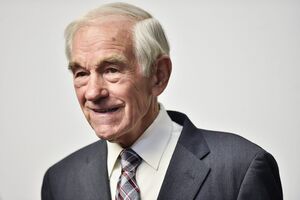
The Republic of Philimania is a constitutional federal republic with the Philimanian Constitution being the supreme law of the land. Exercising the separation of powers, the political system of the country is divded into the executive, legislative and judiciary branch, each controlled by a separate institution. The executive branch is headed by the President of Philimania. Can veto legislative bills, appoint cabinet members and Supreme Court Justices. The legislative branch is made up of the Legislative Council and the House of Representatives. Makes federal law, declares war, allocates federal funds and approves treaties. The judicial branch makes up the Supreme Court and lower federal courts. Has the power of judicial review, and is the highest legal authority after the Constitution.
The President of Philimania is elected directly by the public, and formally approved by the Legislative Council. The ministers of the cabinet are then proposed by the president, who are in turn either approved or rejected by the Legislative Council. The current president and vice-president since 2000 is Nel Karlson and Henry Field of the Philimanian Liberal Party (PLP).
In Philimania's political history, since the founding of the Legislative Council in 1654, the Philimanian Liberal Party (PLP) was most popular party and kept its status until the 2006 Philimania legislative election|X election when the Philimanian Democratic Party (PDP) surpassed them for the first time and had held its superior status until the X election. Since 1654, 74 Legislative Council elections have been held, with the most recent election being held on 28 February 2000.
Foreign Relations
TBA
Military
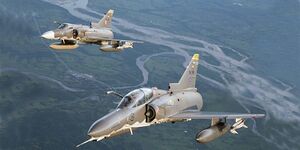
TBA
Economy
with a GDP of P$1.342 trillion and a GDP per capita of P$30,120, the Economy of Philimania is the 13th largest in both the world and South Domica. Philimania is considered to be a developed country with the 62nd highest Human Development Index of the world and boasting one of the largest rates of nominal GDP per capita in any country. The private sector is estimated to constitute 91% of the economy, with federal, regional, and local government accounting for 8.1%. Philimania employed its largest labour force of 11.4 million people in 1998, or 85% of the population, in its history; its unemployment rate was estimated at 0% in 1998, largely due to excellent employment regulations throughout the country.
Philimania's economy consists primarily of tourism, subsistence agriculture and fishing. While the couuntry has access to some resource deposits such as coal and a long history of mining, it is crucially dependant on the import of resources and energy assets from abroad. The most competitive sectors of the Philimanian industry are considered to be the automobile, agriculture and the fishing sectors. The most important trading partners of Philimania in 1999 were X at a trading volume of $151.37 billion, X with $146.60 billion, X with $126.71 billion, and X with $119.28 billion.
The income tax has three brackets with progressive rates of 9.3 percent, 15 percent, and 19.6 percent respectively. Corporate tax is four percent, and the sales tax is zero. There are no property taxes.
Tourism
Philimania is the 13th most visited country in the world, with tourist arrivals numbered some 35.9 million in 2018. Tourism as an economic sector made a considerable contribution to the national economy, generating a revenue of $135 billion, or 10.4% of Philimania's GDP in 2019. 27 of Philimania's counties are registered in some form of tourist agency. 2,842 museums, 94 theatres, 7 amusement parks, 45,940 tennis courts, approximately 87 beaches. 301 golf courses, more than 17,000 kilometres of hike trails and 9,000 kilometres of biking ways, and numerous scuba diving and snorkeling spots are all available and accessible to tourism activities. Additionally, long-term prospects for the key tourist sector have been greatly bolstered by the expansion of air travel in the Nullaric.
Agriculture
While the agricultural industry gradually diminished in their importance to the national economy, it is still considered internationally relevant in generating a wide array of products, being the fourth-largest exporter of agricultural products in South America. The domestic agricultural industry is extremely productive in that it is able to sustain and cover more than 85% of the Philimanian population's needs for food in 2019, mainly due to extensive fertile soils in northern Philimania and sophisticated modern technology used in agriculture.
Principal agricultural exports of Philimania include products of lifestock, including poultry, beef and pork, dairy products, wheat, potatoes, and fruit. Processed food such as variations of cheese and bread are also important, and form staples of Philimanian cuisine.
Science and technology
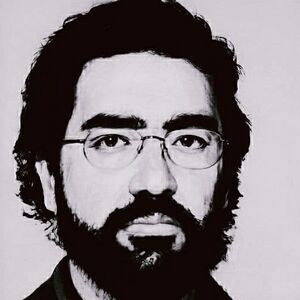
Philimania is an internationally significant and renowned location of technology and science. Since the Industrial Revolution, Philimanian scientists participated immensly in the foundation of modern science; especially the economic productivity of multiple industrial sectors and the transfer of knowledge to practical use proved pivotal in the scientific development of the Philimanian academic field. Publications of scientific matters receive international acclaim and domestic public popularity; scientific journals published in Philimania include Harefind and Archaringe, while Philimania as a research host produced more than 2% of the world's scientific research papers in 2000.
Institutions of research and science in Philimania are embodied through universities. Most of which are in public ownership and service, but their research activities are often financed by third parties such as foundations, companies, and other. The University of New Phork and the International University of Philimania remain one of the most renowned and prestigious universities in the world. Apart from the country's universities, a large number of research organizations are active across Philimania and abroad, represented and coordinated through associations and councils in compliance with the Ministry of Education and each university. the most famous of which include the Joseph Hinderman Society for basic research, the Craftsman Society as the country's largest scientific society, and the Alban Society for applied research.
Culture
Philimania is home to a variety of cultures, a result of a liberal immigration policy. Philimanian culture is generally considered "western", derived from traditions of Oranish and Iolonan culture. Like other Domican nations, Philimania has been described as a melting pot where several cultures join into one.
Philimanians have been described as very compassionate, hard-working, and competitive. This has resulted in great economic productivity and a libertarian form of government. This has also made Philimania a popular destination for immigrants. Philimanians are also firm believers in equality and do not think that one social class should have more rights than others.
Cuisine

Philimania is home to many different cuisines, a result of a liberal immigration policy. But mainstream Philimanian cuisine is similar to that in Iolona cultures with some aspects coming from Oranland. The Wee-Wee Fish, an also an important part of Philimanian cuisine and is often fried, boiled, and minced into small Pastochos, a type of tart made in Philimania. Philimanian cuisine also features dishes such as pineapple pie, Philimanian curry, panipopo, and coconut cake. Bread is also an important part in Philimanian cuisine, dishes wih bread in Philimania includes Luau Bread, Cassavon, and Po'eo.
Places serving Philimanian cuisine can be found all over the country in foodstands, restaurants, and shopping malls. Philimanian cuisine are also sold in night markets which would appear during the weekends and holidays.
Sports
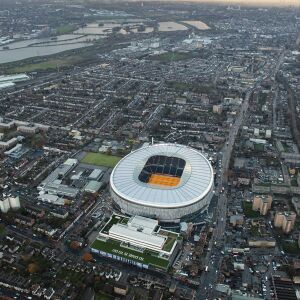
TBA
Education
TBA
Architecture
TBA
Social Media
TBA



